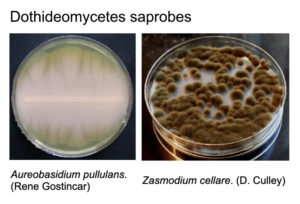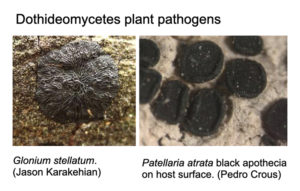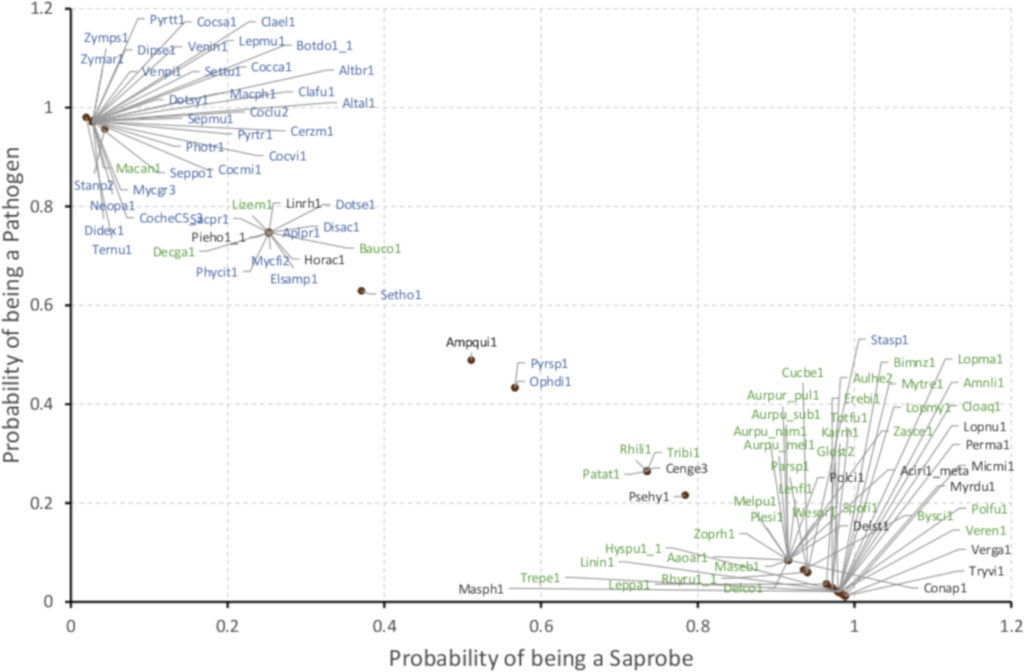Machine learning methods were applied on sequenced fungal genomes to classify gene families.

The Science
As a proof of concept, researchers developed an algorithm that “taught” a computer how to classify 101 representative genomes of Dothideomycetes, the largest class of fungi, by lifestyles. The machine “learned” to identify data generated in part through the 1000 Fungal Genomes Project, including 55 newly-sequenced species.
The Impact

The class Dothideomycetes includes fungi that obtain nutrients from decaying organic matter (saprobes), and many plant pathogens known to infect most major food crops and feedstocks for biomass and biofuel production. Learning about the ecology and evolution of Dothideomycetes could provide more insights into how these fungi have adapted to stress and host specificity, particularly regarding the effects of climate change.
Summary
A team led by researchers at the U.S. Department of Energy (DOE) Joint Genome Institute (JGI), a DOE Office of Science User Facility located at Lawrence Berkeley National Laboratory (Berkeley Lab), has generated a more accurate phylogenetic tree tracking the evolution of Dothideomycetes fungi. The work appeared in the June issue of Studies in Mycology.
This work was enabled in part through JGI’s Community Science Program (CSP), as several approved proposals have contributed toward filling gaps on the fungal Tree of Life, including the 1000 Fungal Genomes Project, which aims to provide a reference genome for each of the fungal families. Researchers had access to over 100 Dothideomycetes genomes, just enough of a sample size to test if a computer algorithm could distinguish between fungal lifestyles of saprobes and pathogens based on the data provided. In this proof of concept test, the team reported that the algorithm was over 95% successful at classifying the fungal genomes

Using whole genome data from newly sequenced genomes, they also built a high-quality phylogenetic tree for Dothideomycetes. The data allowed the team to reclassify 25 Dothideomycetes species, and also provides more information about speciation events.
Contacts:
BER Contact
Ramana Madupu, Ph.D.
Program Manager, DOE Joint Genome Institute
Biological Systems Sciences Division
Office of Biological and Environmental Research
Office of Science
US Department of Energy
[email protected]
PI Contact
Igor Grigoriev
JGI Fungal & Algal Program Head
[email protected]
Funding:
The work conducted by the U.S. Department of Energy Joint Genome Institute, a DOE Office of Science User Facility, is supported under Contract No. DE-AC02-05CH11231. The work was also supported by the NSF grants DEB-1354625 and IOS-1456958. Sequencing of Dothideomycetes genomes were conducted as part of the 1000 Fungal Genomes Project supported by the JGI Community Sequencing Project #662.
Publication:
- Haridas S et al. 101 Dothideomycetes genomes: A test case for predicting lifestyles and emergence of pathogens. Stud Mycol. 2020 Jun;96:141-153. doi: 10.1016/j.simyco.2020.01.003.